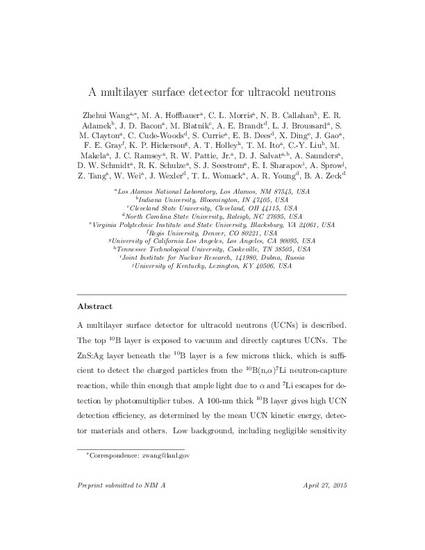
Article
A Multilayer Surface Detector for Ultracold Neutrons
Nuclear Instruments & Methods in Physics Research Section A-accelerators Spectrometers Detectors and Associated Equipment
(2015)
Abstract
A multilayer surface detector for ultracold neutrons (UCNs) is described. The top 10B layer is exposed to the vacuum chamber and directly captures UCNs. The ZnS:Ag layer beneath the 10B layer is a few microns thick, which is sufficient to detect the charged particles from the 10B(n,α)7Li neutron-capture reaction, while thin enough so that ample light due to α and 7Li escapes for detection by photomultiplier tubes. One-hundred-nm thick 10B layer gives high UCN detection efficiency, as determined by the mean UCN kinetic energy, detector materials and others. Low background, including negligible sensitivity to ambient neutrons, has also been verified through pulse-shape analysis and comparisons with other existing 3He and 10B detectors. This type of detector has been configured in different ways for UCN flux monitoring, development of UCN guides and neutron lifetime research.
Keywords
- Multilayer,
- Surface Detector,
- Ultracold Neutrons
Disciplines
Publication Date
October 1, 2015
Publisher Statement
This document is an author manuscript from arXiv. The publisher's final edited version of this article is available at Nuclear Instruments and Methods in Physics Research Section A: Accelerators, Spectrometers, Detectors and Associated Equipment.
Citation Information
"A Multilayer Surface Detector for Ultracold Neutrons" Nuclear Instruments & Methods in Physics Research Section A-accelerators Spectrometers Detectors and Associated Equipment Vol. 798 (2015) p. 30 - 35 ISSN: 0168-9002 Available at: http://works.bepress.com/robert-pattie/11/
